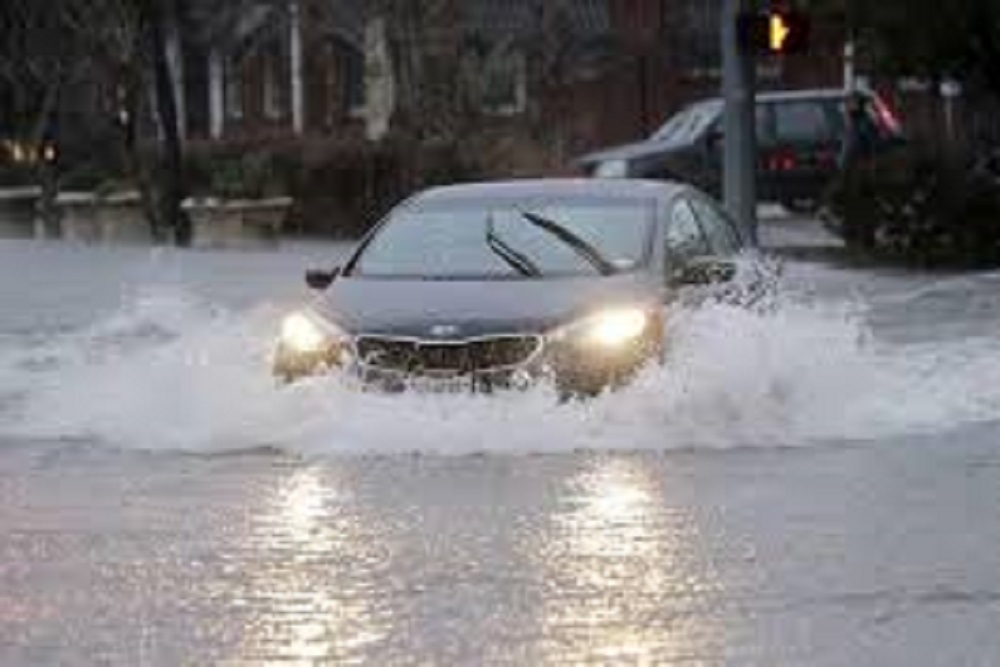American Insurance Association issued the following announcement on July 18.
Hurricane Barry left many flood damaged vehicles in its wake and the American Property Casualty Insurance Association (APCIA) is offering answers to questions that owners of damaged vehicles may have.
First and foremost, it is important to note that water damage to a vehicle is typically covered under an auto policy’s comprehensive insurance coverage, which pays for things such as accidents with animals, if the vehicle is stolen, and damage caused by weather events such as hail or flood.
If flood water damaged your vehicle, contact your insurance company or agent to start the claims process. Your comprehensive coverage typically pays for repairs to the vehicle itself. However, if the cost of repairs exceeds the value of the vehicle, it will likely be totaled. In this situation, your comprehensive coverage will help you replace your vehicle by providing you with the actual cash value of the vehicle, minus the deductible.
“There are many factors that must be considered in the process of determining if a flood damaged vehicle will be repaired or totaled,” said Bob Passmore, APCIA’s assistant vice president, personal lines. “The insurer and body shop will factor in the type of flood water — saltwater or fresh water, how long was the vehicle in the water and how much of it was submerged. The vehicle will only be repaired if it can be safely and economically returned to the road. Otherwise, like any total loss vehicle, the vast majority of these vehicles will be disposed of via salvage auctions and branded as flood damaged or salvage according to the title laws of the state."
While a properly restored, titled, and disclosed rebuilt salvage or restored flood vehicle can be a very economical option to purchase a car, consumers should know what they are getting, because there is always a chance that there will be problems down the road with corrosion or of malfunctions in the electrical systems.
Although a vehicle damaged by a flood should have its title branded, inconsistencies in state laws sometimes allow titles to be ‘washed’ or have their brands removed when transferred in another state. But steps are being taken to make “title washing” much more difficult.
The National Motor Vehicle Title Information System (NMVTIS) requires insurers to report total loss vehicles to a federal data base. In addition, 46 states share information on motor vehicle titles with NMVTIS. Low cost public access Vehicle Identification Number (VIN) checks are available from NMVTIS on www.vehiclehistory.gov. There are also other sources of vehicle history information for used car buyers. Commercial vehicle history services like Car Fax, provide even more detailed vehicle histories. Car Fax is offering free flood damage VIN checks at http://flood.carfax.com/. A free VIN check is also available from the National Insurance Crime Bureau at www.nicb.org.
Vehicle owners whose vehicles have been damaged by flooding should take the following steps:
If the water got above the floorboards, or the seats are wet, don’t try to start the car. The electrical system is the most sensitive to water damage and trying to start the car could cause more damage.
Open the hood and check the air filter, which is easy to find under the hood. If it’s wet, do not try to start the car.
Report the loss to the covering insurer, and protect the car from further damage by covering any broken windows, etc.
Consumers can also do numerous things to avoid buying a flooded vehicle, particularly in cases of vehicles that have been improperly re-titled:
Check the vehicle history at www.vehiclehistory.org, www.nicb.org or via car fax.
Ask the dealer or seller if the vehicle has been damaged before, ask to see the title and check for brands like “flood damaged” or “rebuilt salvage.”
Check the carpets and the seats for signs of moisture, especially the carpet in the trunk. If the carpets and upholstery is dry, does it look newer than the rest of the vehicle? Replacing seat covers and carpet may conceal water damage.
Look for signs of corrosion or rust, particularly on the door hinges, hood springs and in the door opening where the door meets the body.
Is there a moldy smell, or is the smell of cleaning products or air fresheners too pungent?
Check the oil and the air filter for signs of water.
Look at the headlights and taillights; moisture can be trapped inside, making them appear foggy.
Check any place where debris might settle after the water drains, such as wheel wells, in the seating tracks, under the spare tire, etc.
Get a professional to inspect the car or ask to take the car to a mechanic for a thorough inspection.
Some consumers may also want to know whether the Federal Emergency Management Agency (FEMA) may help with costs from flooded vehicles. Vehicle owners can apply for assistance for “reasonable needs and expenses” for vehicle damage not covered by insurance. Owners will likely have to prove that liability insurance requirements were met at the time of the loss, and aid is likely to come in the form of a loan that they will have to pay back.
Original source can be found here.












 Alerts Sign-up
Alerts Sign-up